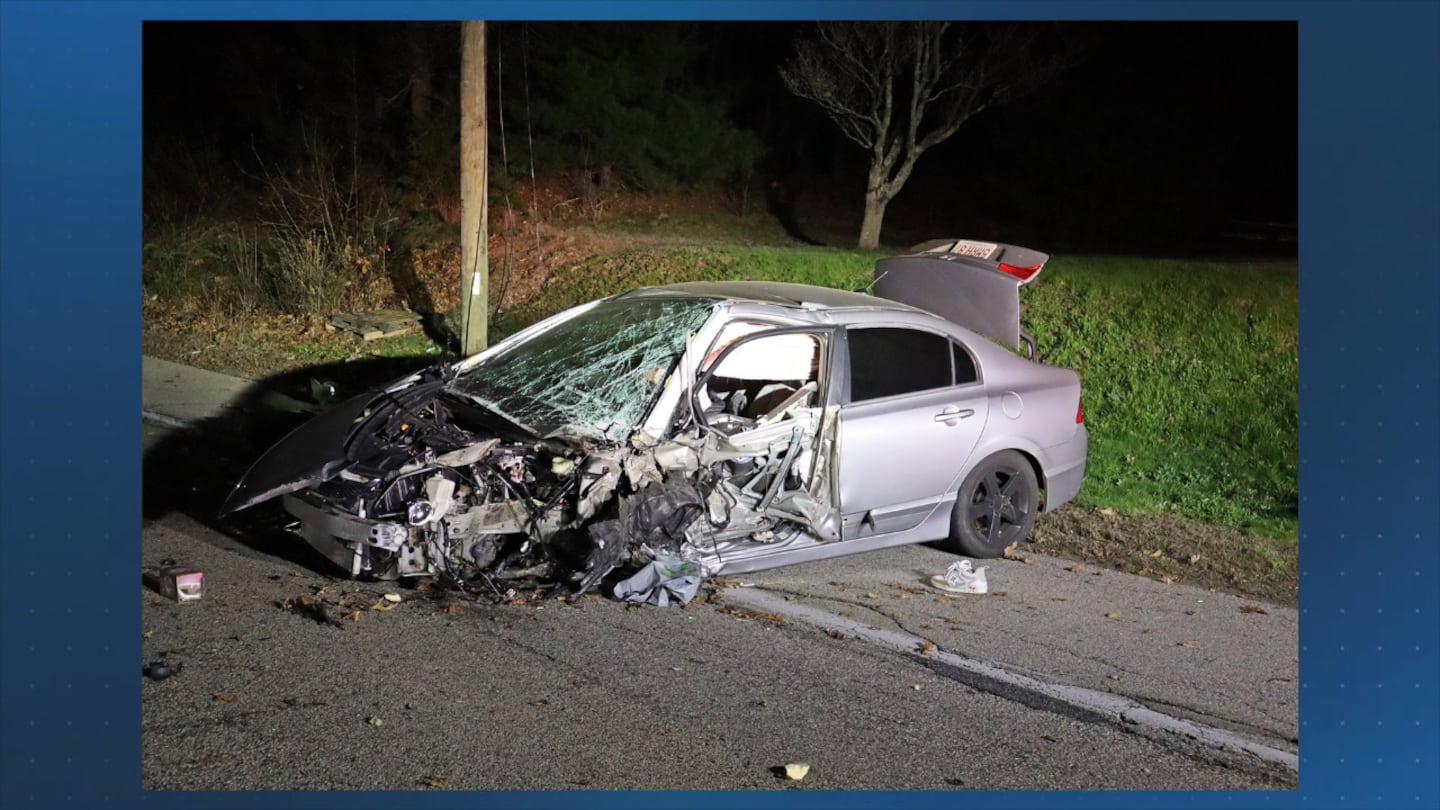HINGHAM, Mass. — Police in Hingham are warning about “drowsy driving” after a teen reportedly fell asleep at the wheel before a serious crash over the weekend.
The 19-year-old driver fell asleep while driving along Sharp Street in Hingham around 2:30 a.m. Sunday, police said Wednesday.
The teen, who was driving home from a church event, crossed into the oncoming lane and crashed into a pole, police told Boston 25.
The teen got out of the car by himself. He suffered non-life-threatening injuries, police said. No one else was involved in the early morning crash.
Police said the driver was wearing his seat belt and air bags deployed upon impact.
“Drowsy driving can be just as dangerous as impairment from alcohol/drugs,” police said in a social media post on Wednesday along with a photograph of the heavily-damaged vehicle involved in the crash.
In 2023, the nation saw 633 deaths from crashes involving “drowsy driving,” according to the National Highway Traffic Safety Administration.
“In a 24/7 society, with an emphasis on work, longer commutes, and exponential advancement of technology, many people do not get the sleep they need,” the NHTSA states on its website. “Effectively dealing with the drowsy-driving problem requires fundamental changes to societal norms and especially attitudes about drowsy driving.”
Drowsy-driving crashes occur most frequently between midnight and 6 a.m., or in the late afternoon, the NHTSA states. At both times of the day, people experience dips in their circadian rhythm—the human body’s internal clock that regulates sleep.
These crashes often involve only a single driver, with no passengers, running off the road at a high rate of speed with no evidence of braking. The crashes frequently occur on rural roads and highways.
The NHTSA offers the following tips to avoid driving drowsy:
- Getting adequate sleep on a daily basis is the only true way to protect yourself against the risks of driving when you’re drowsy. Experts urge consumers to make it a priority to get seven to eight hours of sleep per night.
- Before the start of a long family car trip, get a good night’s sleep, or you could put your entire family and others at risk.
- Many teens do not get enough sleep at a stage in life when their biological need for sleep increases, which makes them vulnerable to the risk of drowsy-driving crashes, especially on longer trips. Advise your teens to delay driving until they’re well-rested.
- Avoid drinking any alcohol before driving. Consumption of alcohol interacts with sleepiness to increase drowsiness and impairment.
- Always check your prescription and over-the-counter medication labels to see if drowsiness could result from their use.
- If you take medications that could cause drowsiness as a side effect, use public transportation when possible.
- If you drive, avoid driving during the peak sleepiness periods (midnight – 6 a.m. and late afternoon). If you must drive during the peak sleepiness periods, stay vigilant for signs of drowsiness, such as crossing over roadway lines or hitting a rumble strip, especially if you’re driving alone.
The teen involved in Sunday’s crash was cited for operating to endanger and speeding, police said.
This is a developing story. Check back for updates as more information becomes available.
Download the FREE Boston 25 News app for breaking news alerts.
Follow Boston 25 News on Facebook and Twitter. | Watch Boston 25 News NOW
©2025 Cox Media Group







